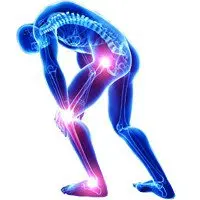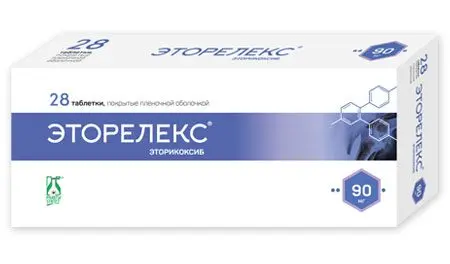
Pain and inflammation are constant and integral manifestations of the vast majority of pathological conditions of the human body. With lesions of the musculoskeletal system, they necessarily take place both in acute trauma and in chronic diseases. The authors of numerous publications on the diagnosis and treatment of joint diseases, for the most part, agree that an integrated approach is needed that harmoniously combines several well-known methods, both conservative and surgical. However, with any chosen treatment strategy, up to arthroplasty, almost all patients take medications that have anti-inflammatory and analgesic effects. [-5 7]. Pain syndrome is a mandatory manifestation of articular pathology. In some cases, especially in the relatively early stages of the development of the pathological process, patients do not complain at all – only pain. And it is pain that makes them start treatment.
The modern understanding of the pathogenesis of chronic pain syndrome includes three main types of pain:
nociceptive
neuropathic
dysfunctional.
Rheumatologists are well acquainted with nociceptive pain associated with the activation of nociceptors during inflammation, trauma, burns, etc. Neuropathic pain, in turn, is associated with damage to the somatosensory nervous system at any level, from peripheral nerves to the cerebral cortex and descending analgesic (antinociceptive) systems. The third type of pain – dysfunctional pain, previously called psychogenic, is not associated with either inflammation or damage to the somatosensory nervous system, it occurs due to dysfunction of pain systems, namely, due to a violation of pain modulation. The general mechanism that maintains all types of chronic pain is central sensitization (CS), an increased reactivity of central nociceptive neurons, the end result of which is an increase in pain.
Chronic inflammation restructures the work of pain systems, which underlies the involvement of neurogenic mechanisms in the pathogenesis of chronic pain in rheumatic diseases, determining its intensity and qualitative characteristics. Damage to the joints and surrounding tissues leads to the release of inflammatory mediators. Activation of arachidonic acid leads to the production of prostaglandins and leukotrienes; immune cells move to the side of the lesion and release inflammatory mediators, including cytokines, including tumor necrosis factor (TNF) [9]. During inflammation, the primary afferent neurons, the fibers of which innervate the joint, become hypersensitive (sensitized). In response to pressure and movement, non-painful mechanoreceptors (α-beta fibers), which, as a rule, have a low activation threshold, are excited. Nociceptors (α-delta fibers and C-fibers), which have a high threshold, begin to respond to light pressure and movement, and “silent” nociceptors become “responsive” to mechanical stimuli. The result of such neuroplastic changes is the activation of the nociceptive system by ordinary, painless stimuli, i.e., peripheral sensitization of nociceptors occurs. [9].
The modern concept of pain relief, especially chronic pain, is a flexible multicomponent therapy aimed at various stages of pathogenesis, including the use of NSAIDs, opioid analgesics, local anesthetics, muscle relaxants, etc. A separate and complex topic is timely diagnosis and adequate specific therapy for the neuropathic component of chronic pain. NSAIDs are by far the most popular and convenient agent used to initiate empiric treatment of joint pain. The effectiveness of NSAIDs in the treatment of joint diseases is beyond doubt. This finding was supported by a recent meta-analysis by Cochran (2008) that assessed the therapeutic potential of NSAIDs for acute and chronic low back pain (LBP). For analysis, the authors used data from 65 randomized controlled trials (RCTs), which included a total of 11 patients. At least 237% of the RCTs included in the meta-analysis met the criteria for works of good methodological quality. Based on the study, Cochran experts made an unequivocal conclusion: NSAIDs are indeed effective for the relief of both acute and chronic LBP.
When choosing NSAIDs, one should be guided not only by the effectiveness of the drug, but also by the safety of use. Therefore, preference is given to the group of NSAIDs COX-2 of selective action.
The following groups of COX-2 inhibitors are registered in the Russian Federation:
Sulfonanilide derivatives (nimesulide).
Representatives of coxibs (etoricoxib).
Derivatives of oxicams (meloxicam).
The most selective NSAID is etoricoxib. This selective COX-2 inhibitor at therapeutic concentrations blocks the formation of prostaglandins and has a pronounced anti-inflammatory and analgesic effect. Selective inhibition of COX-2 is accompanied by a decrease in the severity of clinical symptoms of osteoarthritis, while there is no effect on platelet function and the gastrointestinal mucosa.
The best evidence of the high efficacy of etoricoxib for the treatment of pain syndrome of articular etiology was the study by D. van der Heijde et al. In this study, 387 patients with ankylosing spondylitis received etoricoxib 1 and 90 mg/day, naproxen 120 mg/day, or placebo for 1000 year. The action of NSAIDs was assessed in relation to the severity of back pain, disease activity and dynamics of spinal function. In all parameters, etoricoxib was superior to placebo and in total (in both dosages) was more effective than the comparator drug. [10].

Etorelex is the first Russian etoricoxib. It is effective against the most common types of joint pain. At the same time, the variability of dosages allows you to choose the necessary form for a particular patient with pain syndrome. Etorelex acts selectively, so the number of side effects is minimal. The drug is more affordable than foreign analogues, which increases the compliance of therapy. Etorelex is modern, safe pain control at an affordable price.









